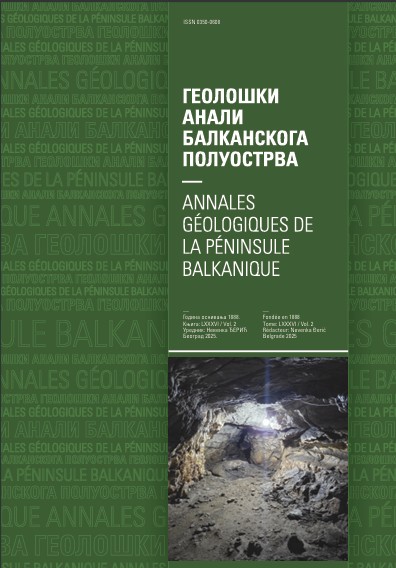Petrografske promene kostolačkog mekog mrkog uglja pri katalitičkoj hidrogenizacionoj likvefakciji
Petrographic changes of the Kostolac mine soft brown coal during catalytic hydroliquefaction
Abstract
Investigations of the soft brown coal from the Kostolac Mine (Drmno, Serbia) were carried out in this paper, aimed at obtaining liquid fuels by catalytic hydrogenation. The experiments were carried out at temperatures up to 440°C and pressures up to 15.0 MPa, for periods up to 8h. The solid coal residues, remaining after the separation of liquid products and the catalyst, were examined microscopically. The observed petrographic changes, correlated with the reaction conditions as well as relevant chemical data, were used for the estimation of the Kostolac coal reactivity in the catalytic hydroliquefaction process. The solid residues were found to consist of different kinds of grains of modified coal and newly formed types of grains, as well as mineral matter. Twelve different categories of grains were identified and their petrographic composition and optical properties were analyzed in detail.
A small participation of grains of nonreacted or partly reacted coal in the solid residues confirmed a high reactivity of the Kostolac coal in the liquefaction process. The proportion of the grains of reacted coal, formed during the initial stages of hydrogenation, did not depend much on the experimental conditions, indicating a similar desintegration degree of the coal regardless of the reaction conditions. The grains of granular residue contained coal substance as well. However, the determination of its proportion was difficult, since it was impossible to determine precisely the content of mineral ingredients. The fact that humoplasts were not observed among the grains also suggested that the reactivity of this coal was good. Finally, small participation of coke and semi-coke in the solid residues was another approval of appropriate selection of liquefaction conditions, which led to reduced formation of mesophase products.
Copyright (c) 1998 Geološki anali Balkanskoga poluostrva

This work is licensed under a Creative Commons Attribution 4.0 International License.










